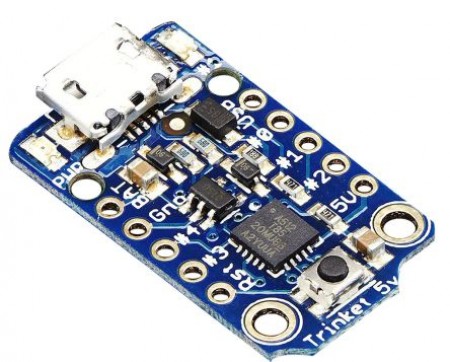

On-board green power LED and red pin #1 LED.Power with either USB or external output (such as a battery) – it’ll automatically switch over.Up to 16V input, reverse-polarity protection, thermal and current-limit protection.On-board 3.3V or 5.0V power regulator with 150mA output capability and ultra-low dropout.Mini-USB jack for power and/or USB uploading.USB bootloader with a nice LED indicator looks just like a USBtinyISP and can be programmed with AVRdude (with a simple config modification) and/or the Arduino IDE (with a few simple config modifications).Internal oscillator runs at 8MHz, but can be doubled in software for 16MH.z.ATtiny85 on-board, 8K of flash, 512 byte of SRAM, 512 bytes of EEPROM.Use the 5V one for sensors and components that can use or require 5V logic, the 5V can run at 8 MHz or at 16MHz by setting the software-set clock frequency,” she added. “Use the 3V one to interface with sensors and devices that need 3V logic, or when you want to power it off of a LiPo battery. According to LadyAda, both work the same but have different operating logic voltages. There are currently two versions of the Trinket: 3V and 5V. You can’t stack a big shield on it but for many small and simple projects the Trinket will be your go-to platform.” “In fact we even made some simple modifications to the Arduino IDE so that it works like a mini-Arduino board. “We designed a USB bootloader so you can plug it into any computer and reprogram it over a USB port just like an Arduino,” Fried continued. “ perfect for when you don’t want to give up your expensive dev-board and you aren’t willing to take apart the project you worked so hard to design.”įried describes the Attiny85 as a “fun processor,” because despite being so small, it boasts 8K of flash and 5 I/O pins – including analog inputs and PWM ‘analog’ outputs.

“We wanted to design a microcontroller board that was small enough to fit into any project – and low cost enough to use without hesitation,” Adafruit’s Limor Fried (aka LadyAda) explained.

Adafruit has launched the Trinket, a tiny microcontroller board built around Atmel’s ATtiny85.


 0 kommentar(er)
0 kommentar(er)
